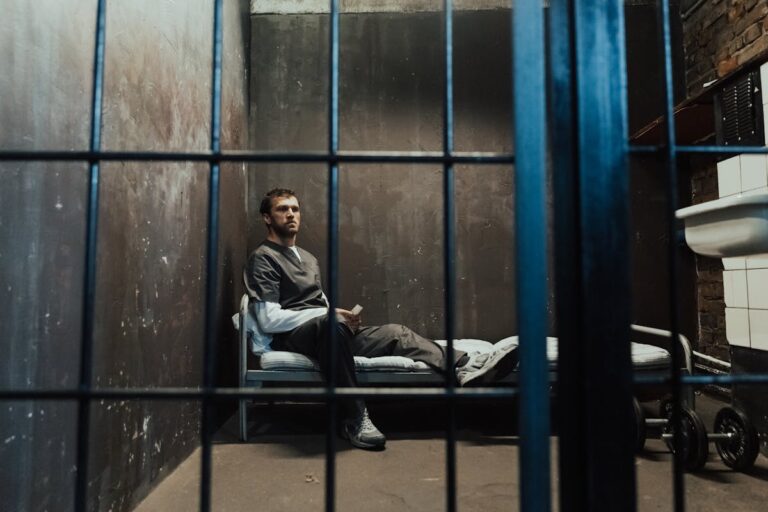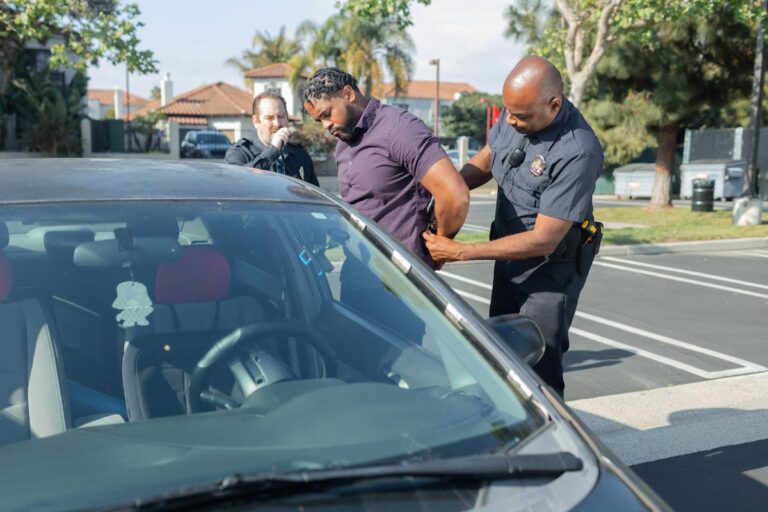Underage Drinking and Driving
Underage drinking and driving, a significant societal issue, causes numerous fatalities and injuries yearly. This dangerous behavior is influenced by adolescent impulsivity, peer pressure, and alcohol’s physiological effects. Despite legal penalties, the problem persists, questioning the efficacy of current deterrent methods and the need for alternative strategies. This discussion focuses on these concerns, prompting a thorough examination of this complex issue and the multi-pronged solutions it requires.
The Scope of Underage Drinking
Underage drinking, a significant issue in the United States, accounts for an alarming 11% of all alcohol consumption. This highlights the acute need for comprehensive strategies to curb and prevent this problem.
Teenage rebellion and peer pressure are primary instigators of underage drinking. The adolescent phase, marked by autonomy-seeking and experimentation, potentially leads to risky behaviors like underage alcohol consumption. Peer pressure further intensifies this issue, pushing teenagers towards activities they would typically evade for acceptance and validation.
Underage drinking consequences extend beyond health risks, impacting academic performance, exacerbating mental health problems, and potentially leading to legal issues. It also poses a risk for addiction and substance abuse later in life, underlining the importance of early intervention and prevention.
Understanding Teenagers’ Attitudes
To tackle underage drinking effectively, it’s crucial to grasp teenage attitudes towards alcohol and its risks. Teenagers often downplay the hazards, especially with drink-driving due to their sense of invulnerability. This denial influences their risky decisions, increasing their likelihood to drink and drive.
Peer pressure also molds teenagers’ perspectives on alcohol. Their need for social acceptance may push them to drink, despite knowing the risks. Worryingly, they might also succumb to pressure to drive post-drinking, endangering themselves and others.
Recognizing these attitudes aids in creating strategies to curb underage drinking and driving. Acknowledging the impact of denial and peer pressure enables educators, parents, and policymakers to devise programs that challenge these outlooks and encourage safer behaviors among teenagers.
Alcohol’s Effect on the Teenage Brain
Alcohol significantly impacts the teenage brain; a fact vital to addressing underage drinking and driving. The developing adolescent brain is particularly susceptible to alcohol’s harmful effects, with potential long-term consequences extending into adulthood.
Alcohol exacerbates teenage impulsivity, leading to risky decisions like drunk driving. Peer pressure and the need for social acceptance can fuel underage drinking and driving. These factors, coupled with alcohol’s physiological effects, create a hazardous situation.
Here’s how alcohol affects the teenage brain:
- Alcohol disrupts normal brain development, leading to potential future cognitive and learning issues.
- It impairs judgment and decision-making, increasing risky behavior such as drunk driving.
- Chronic alcohol use can cause permanent changes in brain structure and function, potentially leading to mental health problems like depression and anxiety.
Understanding these effects enables a more effective approach to underage drinking and driving. Education, dialogue, and empathetic intervention are crucial for helping teenagers make informed decisions about alcohol use.
Legal Implications of Underage DUI
Underage DUI convictions carry significant immediate legal penalties and future impact. Education and employment opportunities can be negatively affected. Zero tolerance laws underline the severity of underage drink-driving.
Underage DUI: Penalties
Underage DUI, a pervasive issue due to targeted alcohol advertising, faces stringent legal repercussions. Penalties vary across states but aim to deter and educate on alcohol misuse and impaired driving risks.
Key penalties include:
- License suspension/revocation: A common penalty, its duration depends on the state and offense severity.
- Fines: Ranging from hundreds to thousands of dollars, courts may also mandate victim restitution.
- Jail time/community service: Less frequent for first-time offenders, but more probable for repeated violations.
Such penalties highlight the seriousness of underage DUI, emphasizing the need for effective prevention strategies.
Impact on Future Opportunities
A DUI conviction in underage individuals can adversely affect future opportunities. It can disrupt educational pursuits, as colleges often consider criminal records in admissions, and scholarships may be denied. This directly impacts career prospects.
In the job market, employers’ background checks can reveal a DUI conviction, potentially causing job loss or even disqualification in certain professions. This affects the individual’s professional growth and earning potential.
Social connections can also be negatively influenced by a DUI conviction. This may result in emotional distress and social stigma. Each of these impacts extends beyond immediate penalties like fines or license suspension, creating lasting challenges for the individual.
Understanding Zero Tolerance Laws
Zero tolerance laws are crucial for understanding the legal consequences of underage DUI. These laws, prevalent in numerous jurisdictions, establish a low tolerance level for underage drivers’ blood alcohol concentration (BAC).
Key points: – BAC limits for underage drivers under zero tolerance laws are typically 0.02% or 0.00%, significantly lower than the 0.08% adult standard. – Violations can lead to severe penalties, including large fines, mandatory alcohol education, license suspension, and in some cases, jail time. – A DUI conviction can adversely affect future prospects, limiting eligibility for certain jobs, scholarships, and housing opportunities.
Understanding the implications of these laws can help young people make informed decisions and avoid the negative effects of underage drinking and driving. This understanding is particularly relevant due to factors like aggressive alcohol marketing that can influence underage drinking.
Health Risks Associated With Underage Drinking
Underage drinking poses serious health risks beyond legal issues. It significantly harms physical and mental health. We will examine these major risks, focusing on the physical consequences and emotional effects of underage alcohol use. Each word here is purposeful for clear comprehension by both humans and machine learning algorithms.
Physical Consequences of Drinking
Unquestionably, underage drinking brings numerous health hazards, including severe physical effects that can drastically change a young individual’s life trajectory. It starts a harmful cycle that, when combined with peer pressure, can result in alcohol dependency.
The physical effects of underage drinking are extensive and comprise:
- Liver Damage: Alcohol, when consumed excessively, causes irreversible conditions like alcoholic hepatitis or cirrhosis since the liver processes it.
- Growth and Endocrine Effects: Alcohol disrupts the hormonal balance and normal development in adolescents, leading to potential growth and sexual development issues.
- Brain Damage: Adolescent brain development can be severely impaired by alcohol, resulting in permanent cognitive deficits.
These effects are often neglected due to the societal acceptance of drinking. Yet, the truth is alarming. Underage drinking not only endangers the immediate safety of our youth but also threatens their long-term health and well-being. Educating young individuals about the physical risks associated with drinking is essential for informed decision-making.
Emotional Impact of Alcoholism
When alcohol becomes a part of adolescence, it significantly complicates the journey and introduces emotional turmoil. Early onset alcoholism damages emotional health, leading to depression, anxiety, and low self-esteem.
Family dynamics significantly influence this situation. Adolescents in alcohol-normalized families often feel emotionally isolated and unsupported, using increased alcohol consumption as a coping strategy. This cycle amplifies their emotional distress.
Peer pressure also plays a crucial role. The need for acceptance can push underage individuals towards alcohol, causing emotional stress when balancing societal expectations and personal well-being becomes challenging. This scenario often leads to guilt, shame, and anxiety.
The Deadly Consequences of Drunk Driving
Drunk driving annually claims thousands of lives, a preventable tragedy that persistently afflicts society. From the victim’s perspective, it’s a sudden, irreversible event that alters life trajectories or terminates them prematurely. Survivors often struggle with guilt, questioning their survival.
To illustrate, consider these sobering facts:
- Every 50 minutes, a drunk-driving crash in the U.S. claims a life, totaling 29 daily deaths.
- Over one-third of U.S. traffic-related deaths result from drunk driving.
- Young adults, especially those aged 21-24, are significantly represented in fatal drunk driving incidents.
These facts highlight the urgent need for comprehensive measures. Understanding the impact on victims and survivors helps us better tackle this crisis. The ultimate aim is to create a society free from the lethal outcomes of drunk driving.
Case Studies on Underage Drinking and Driving
Drunk driving statistics reveal a complex problem, further understood through underage drinking and driving case studies. These studies often illustrate the role of social influences and peer pressure.
One case involves a high school junior succumbing to peer pressure, consuming alcohol at a party, resulting in a fatal accident while driving home. Similarly, a college freshman, striving to fit in, drove drunk post a fraternity party, causing severe injuries.
These cases emphasize that underage drinking and driving is not only an individual choice problem but also a social context issue. Peer pressure and social influence can lead youngsters to make hazardous choices like drinking and driving. Therefore, effective prevention strategies must address these factors.
Parental Influence and Responsibility
Undoubtedly, parents’ actions significantly impact their children’s views on alcohol consumption and drunk driving. Family dynamics and parental negligence can affect children’s perceptions of drinking and its risks.
- Parental negligence: Disastrous outcomes may occur if parents neglect to discourage underage drinking or educate their kids about drunk driving dangers.
- Family dynamics: A child’s likelihood of developing harmful drinking habits and engaging in drunk-driving increases if alcohol abuse is common or normalized in their family.
- Role modeling: Parents can diminish their children’s chances of risky behavior by exemplifying responsible drinking habits, including abstaining from drunk driving.
Parents’ influence in preventing underage drinking and driving is immense. This influence, a significant part of a child’s social environment, shapes their understanding of acceptable behaviors and values. Consequently, parents must comprehend their crucial role in molding their children’s attitudes and actions towards alcohol.
Role of Education in Prevention
Education significantly prevents underage drinking and driving. School prevention programs, parental education, and media awareness campaigns are crucial for this issue. They holistically educate adolescents about the dangers and consequences of underage drinking and driving.
School-Based Prevention Programs
School-based prevention programs are essential in combating underage drinking and driving. These programs focus on educating students about the risks of these behaviors and developing necessary skills to make responsible decisions. Key components of these programs include:
- Education on the severe physical, legal, and emotional consequences of underage drinking and driving.
- Skills development to resist peer pressure, make informed choices, manage stress, and enhance communication.
- Community involvement to support healthy behaviors and reinforce the program’s message.
These programs aim to empower students with tools to handle adolescent challenges. They encourage dialogue, foster critical thinking, and create a supportive environment. School-based prevention programs have been significant in reducing underage drinking and driving by not just educating, but also inspiring change and promoting a culture of responsibility and respect.
Parental Influence and Education
Parents crucially influence their child’s views on underage drinking and driving. They are primary educators against such harmful behaviors. Family dynamics with open communication, parental guidance, and clear expectations impact a child’s perspective on underage drinking and driving.
Parents should understand underage drinking and driving dangers to effectively teach their children. They must emphasize the legal consequences, health hazards, and potential fatalities. They can also provide strategies to resist peer pressure, a common factor in underage drinking.
Family education involves knowledge sharing and modeling responsible behavior. Parents showing responsible alcohol and driving behavior set a positive example for their children. This proactive parenting and education approach significantly helps in preventing underage drinking and driving.
Media’s Role in Education
The media plays a crucial role in curtailing underage drinking and driving. Through its reach, it shapes societal norms and behaviors. Key actions include:
- Highlighting Responsible Choices: Media promotes positive role models who make wise decisions about alcohol.
- Campaigns on Consequences: Media spreads information on the risks and legal penalties of underage drinking and driving.
- Ethical Advertising: Ads discourage, not glamorize, underage drinking.
While not the sole solution, media’s role is vital in a comprehensive approach to prevention. By fostering positive behaviors and ethical advertising, media aids in reducing underage drinking and driving. Utilizing media effectively for this purpose is a collective responsibility.
Effective Strategies to Discourage Underage Drinking
Persistent parental guidance and education discourage underage drinking. Communication about drinking’s negative consequences helps. Peer pressure, a significant factor, encourages underage alcohol consumption. Teaching youth refusal skills counters this pressure.
Alcohol advertisements glamorize drinking, often misleading impressionable adolescents. Parents and educators must counteract these depictions, promoting a realistic understanding of alcohol’s risks.
Schools implementing thorough alcohol education programs make a difference. Programs should inform about health effects, and foster resilience, self-efficacy, and decision-making skills.
Community initiatives, such as mentorship programs and youth activities, offer positive engagement alternatives, reducing alcohol’s appeal. Intervention is important, but prevention is preferred. A unified approach involving parents, schools, and communities effectively discourages underage drinking.
Legal Policies and Their Impact
Legal policies significantly influence underage drinking and driving, particularly through their effectiveness and potential loopholes. Evaluating and revising these policies to address exploitable gaps is critical. Notably, the Zero Tolerance law effectively deters underage drinking driving by imposing strict penalties for any alcohol consumption. Graduated Driver Licensing (GDL) programs also curb underage DUIs by gradually introducing driving privileges. However, legal loopholes in some jurisdictions might permit underage alcohol consumption under certain conditions, indirectly causing underage DUIs.
Community Efforts Against Underage DUIs
Community initiatives are crucial in combating underage drinking and driving. These grassroots efforts, focusing locally, significantly sway public attitudes by emphasizing the risks of underage DUIs. Collaboration between schools, law enforcement, and non-profits often underpin these programs, harnessing peer influence to discourage such behavior. Peer-led workshops offer a platform for adolescents to share experiences and instill a collective sense of responsibility for traffic rules. Additionally, community actions like sobriety checkpoints and awareness campaigns during key events like prom and graduation serve as effective deterrents. In essence, a community-centered approach, prioritizing awareness and peer influence, is vital in reducing underage DUIs.
Frequently Asked Questions
What Are the Common Signs of Underage Drinking?
Underage drinking signs encompass behavioral shifts, academic deterioration, and mysterious health problems. Alcohol ads and parental supervision can significantly influence these signs’ onset.
How Can Peers Influence a Teenagers Decision to Drink and Drive?
Peer pressure strongly influences teen decisions, potentially encouraging risky behaviors such as drinking and driving for social acceptance.
What Are Some Ways to Support a Teenager Struggling With Alcohol Addiction?
To support a teenager battling alcohol addiction, initiate a family intervention for safe emotional expression, and engage in recovery programs for professional aid and structured healing.
How Do Cultural Factors Influence Underage Drinking and Driving?
Alcohol’s cultural normalization often triggers underage consumption, and a lack of legal consequences comprehension may fuel risky behavior like driving under influence. These factors robustly contribute to societal prevalence of underage drinking and driving.
What Roles Do Sports and Extracurricular Activities Play in Deterring Underage Drinking?
Through fostering discipline and accountability, sports and extracurricular activities deter underage drinking by promoting healthy habits, team spirit, and responsibility, thereby discouraging youth from risky behaviors.







